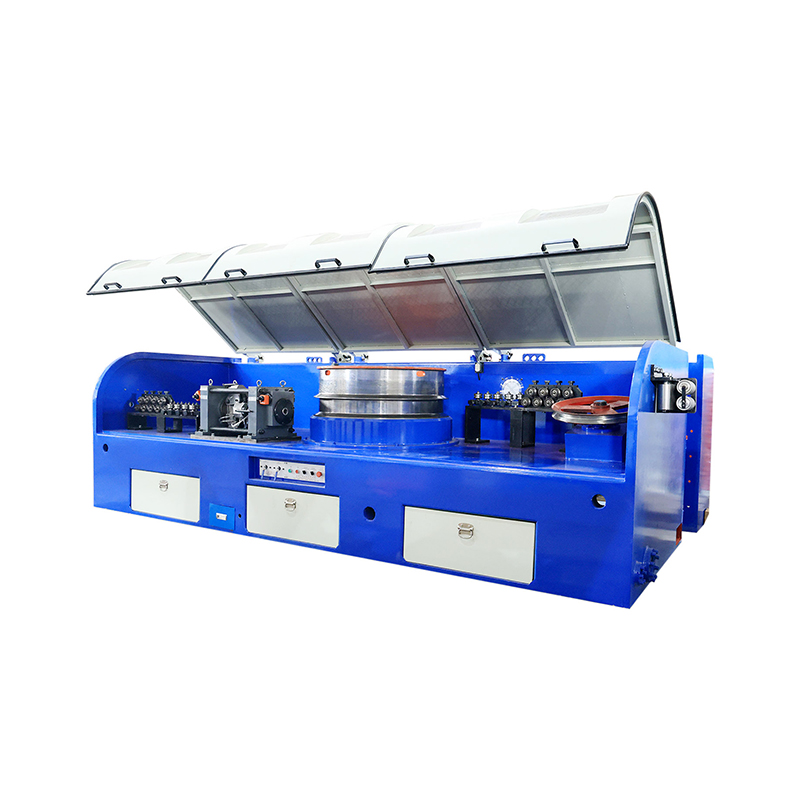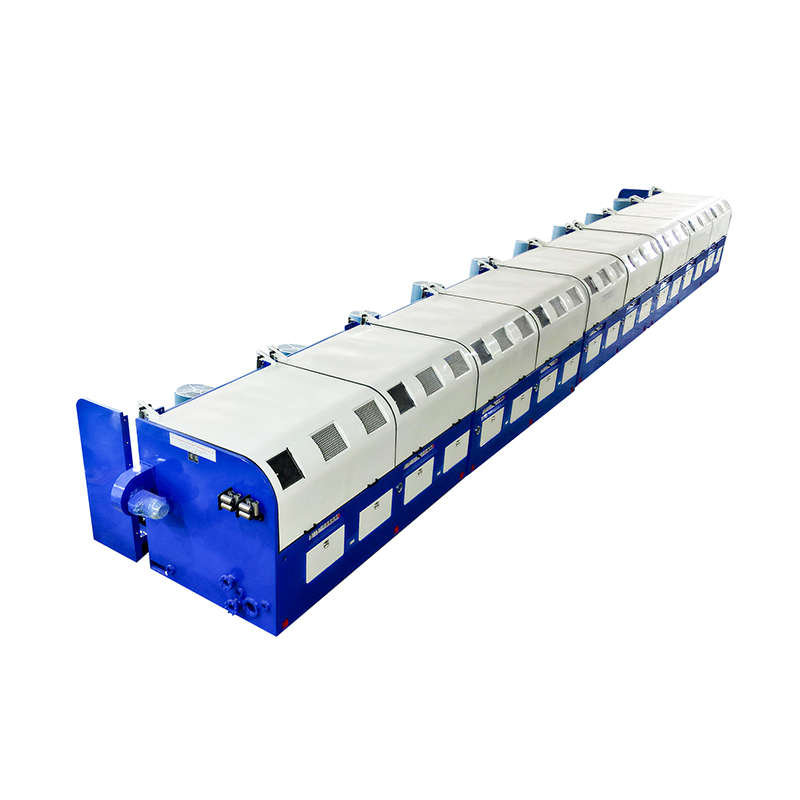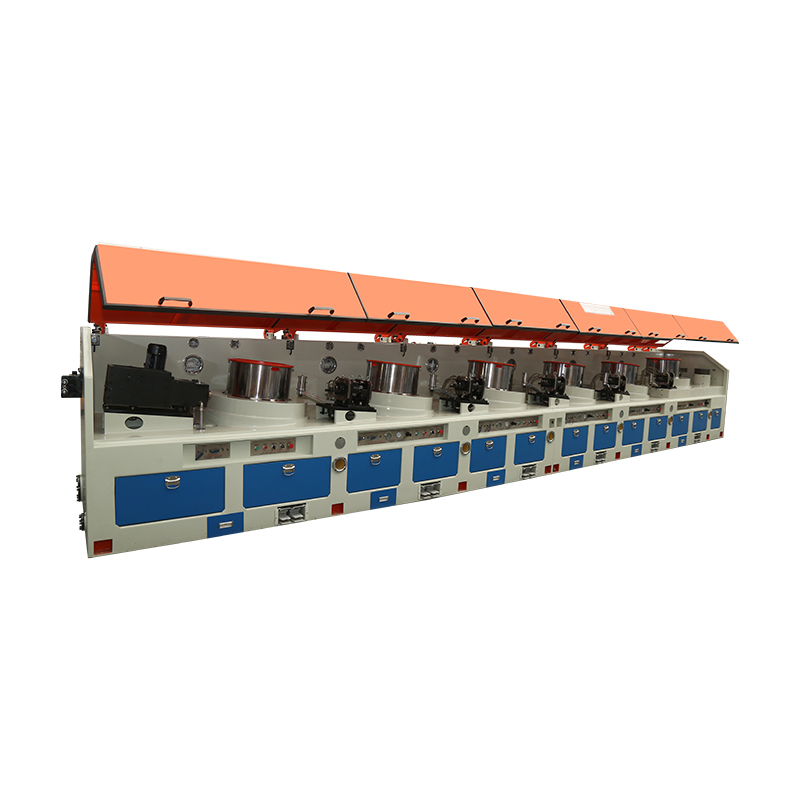How to avoid common production defects in the application of straight line wire drawing machine?
Avoid wire breakage
Tension control: Wire breakage is usually caused by excessive tension during the drawing process. To avoid breakage, the drawing tension must be precisely controlled. Using high-precision tension sensors and control systems can ensure that the tension is within the allowable range and adjust the tension according to real-time feedback during the production process.
Adjust the drawing speed: Excessive drawing speed may cause the wire to break. By reasonably adjusting the drawing speed, breakage caused by excessive speed can be avoided. Adjust the drawing speed according to different metal materials (such as copper, aluminum, steel, etc.) to ensure optimal ductility.
Mold selection and maintenance: The design and maintenance of the mold are also crucial. Using suitable molds and regularly checking the mold wear can reduce the problem of breakage caused by uneven mold or uneven wear during the drawing process.
Avoid surface cracks
Cooling and lubrication: During the drawing process, cracks may occur on the metal surface due to overheating. To avoid this, a good cooling and lubrication system should be maintained, especially in the case of wet drawing or high-load drawing. Appropriate coolants and lubricants can effectively reduce the temperature and friction of the metal surface and prevent cracks from forming.
Uniform temperature control: Sharp fluctuations in temperature can easily lead to embrittlement or surface cracks in the material. Use an advanced temperature control system to ensure uniform temperature distribution during the stretching process and reduce cracks caused by uneven cooling.
Material selection: During the stretching process, metal materials with good ductility (such as copper and aluminum) should be selected. These metal materials can withstand large stretching without cracking. Special control and optimization operations are required for high-strength materials such as stainless steel.
Avoid surface scratches
Optimize the material of rollers and drums: The material and surface smoothness of rollers and drums directly affect the surface quality of metal wires. If the roller surface is rough or damaged, it is easy to scratch the wire during the stretching process. Therefore, check the surface of rollers and drums regularly, and polish or coat them (such as chrome plating or ceramic coating) when necessary to maintain their smoothness and reduce scratches on the wire.
Prevent foreign matter contamination: Dust, metal shavings or other foreign matter in the operating environment may cause surface scratches. Keeping the production area clean, cleaning equipment and pipelines regularly, and avoiding foreign matter contamination are the key to preventing scratches.
Adjust coolant and lubricant: The use of coolant and lubricant can reduce friction and protect the surface of the wire. Choosing the right coolant and lubricant and ensuring their uniform flow and distribution can effectively reduce the risk of scratches.

Avoid oxidation or discoloration of the wire surface
Improve annealing process: For some metals (such as copper, aluminum, etc.), oxidation during drawing is particularly serious. In order to avoid surface oxidation, proper annealing should be carried out in combination with an annealing furnace (especially protective atmosphere annealing) to reduce oxidation reactions.
Optimize environmental conditions: Air humidity and oxygen concentration during wire drawing will also affect oxidation of the metal surface. Oxidation can be effectively reduced by controlling the oxygen concentration in the production environment (such as using nitrogen protection) or using a suitable coolant in wet wire drawing.
Adjust lubricant: Using the right lubricant can reduce the contact between the metal and the air and avoid surface oxidation. Some lubricants even contain anti-oxidation ingredients to provide additional protection.
Avoid uneven size or shape deviation
Die design and maintenance: The design of the die should ensure uniform drawing of the wire during drawing to avoid uneven size or shape deviation. Wear of the die will cause uneven stretching of the wire, so it is necessary to regularly check the use status of the die and replace the severely worn die in time.
Real-time monitoring system: The use of a precise online dimension measurement and detection system can monitor the dimensional changes in the production process in real time, and adjust the operating parameters in time to ensure that the size of each wire meets the requirements.
Adjust the cooling speed: Unevenness during the cooling process can also cause dimensional changes, especially during hot wire drawing. Optimizing the distribution and flow of the coolant to ensure uniform cooling of the metal wire can reduce dimensional deviations caused by uneven cooling.
Avoid equipment failure or production downtime
Equipment maintenance and inspection: Regularly conduct a comprehensive equipment inspection of the straight line wire drawing machine, especially maintenance of key components such as the electronic control system, tension sensor, lubrication system, etc., which can effectively avoid equipment failure and production interruption.
Fault diagnosis and automated monitoring: The use of modern fault diagnosis systems and real-time monitoring technology can promptly detect potential problems of the equipment and deal with them, reduce sudden failures, and ensure production continuity.


 EN
EN
 English
English Español
Español Français
Français Português
Português عربى
عربى













